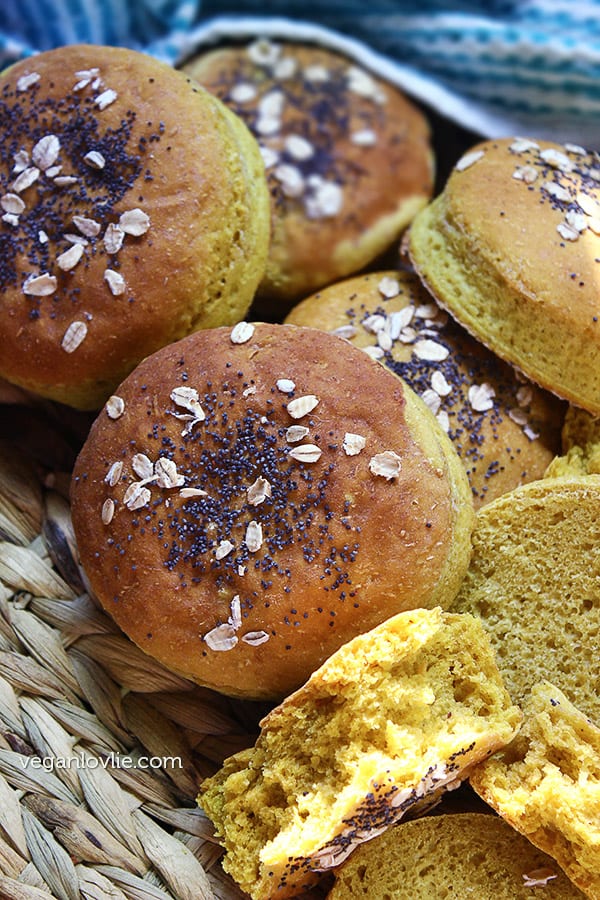
Turmeric always reminds me of a funny situation that happened to one of my friends when we were still colleagues a few years ago. From time to time, we would go out to lunch with a few colleagues to one of the nearby restaurants around the office. At that time I was living in Ireland. So, on one occasion we decided to go for the Indie Spice restaurant. But my colleague was rather hesitant to go to the Indian restaurant on that day as she had quite recently put some braces on her teeth and was worried that the curry sauces would stain the elastic. Even though some people go for coloured rubber bands, she preferred hers to be as invisible as possible. So, I advised her to go for the tomato-based curries that contain less turmeric. But despite this, her elastic band did turn yellow giving her a golden smile! Our Chinese colleague teased her telling her that in China, yellow teeth are regarded as a symbol of prestige. Anyway, she went back to her dentist to get the elastic changed. So, for the whole year after this incident, we did not go to have lunch at the Indian restaurant.
As you may have noticed, turmeric is one ingredient that is very often called for in my recipes primarily for the taste, fragrance and colour that it adds to the dishes. It’s a good thing that it has so many health benefits too. Whenever I can find it in the fresh root form, I never miss to buy it but otherwise, the powdered version is a staple in my kitchen.
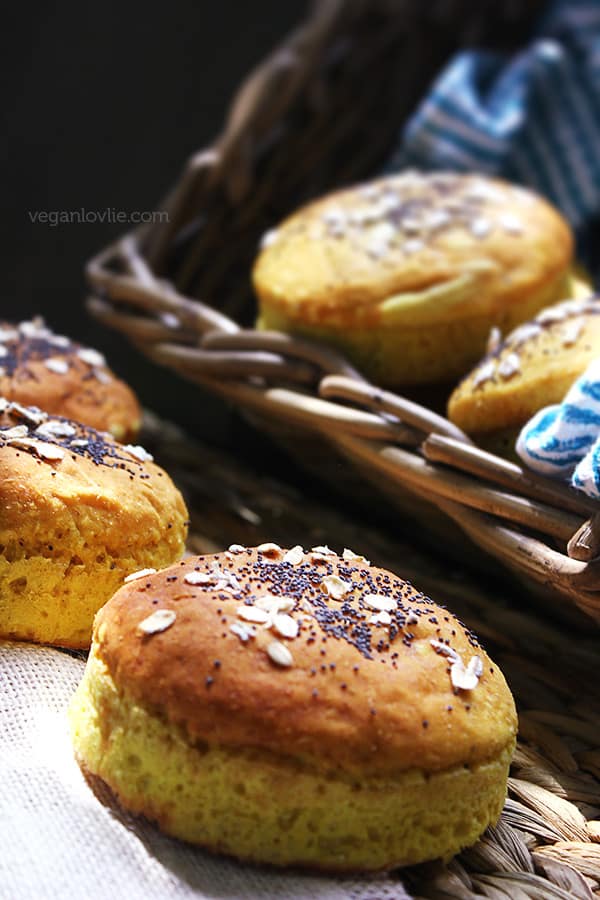
These buns are the ones that were presented with the veggie burger recipe posted last week. They are pretty tasty and fragrant with the addition of turmeric and coconut. This bread is soft and fluffy and I haven’t added any oil in the dough as the fresh coconut does a good job with adding in some natural fat. However, you may add one to two tablespoons of coconut oil which will make these buns even softer and more moist.
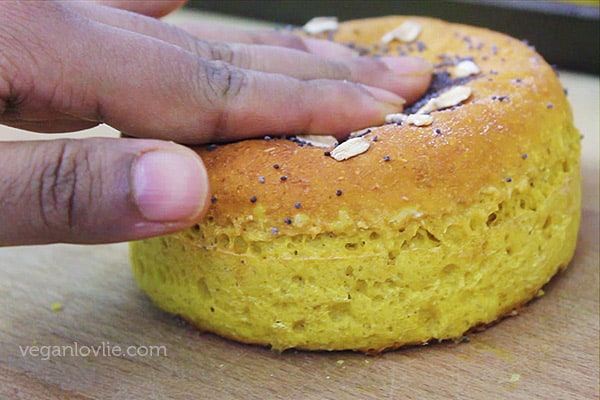
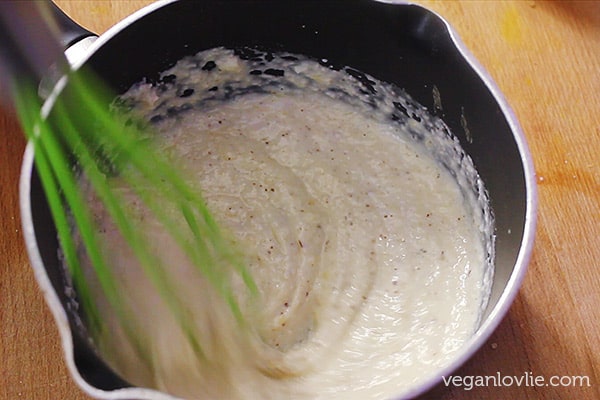
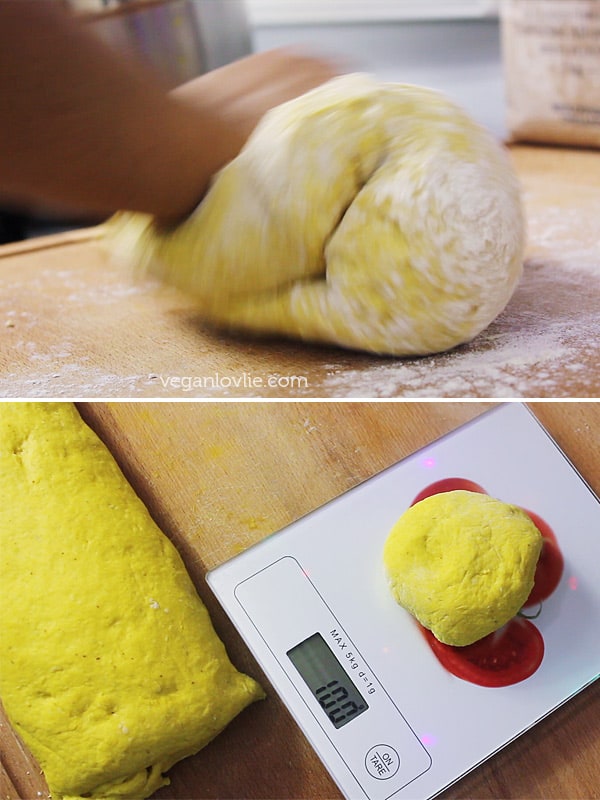
A side note on the Veggie Burger recipe that has been well received, tried and liked by many of you. Nothing makes me happier when you share a photo of what you’ve made with me. This really warms my heart so thank you to all of you who have tagged and sent me a picture of recipes tried from this blog or the channel.
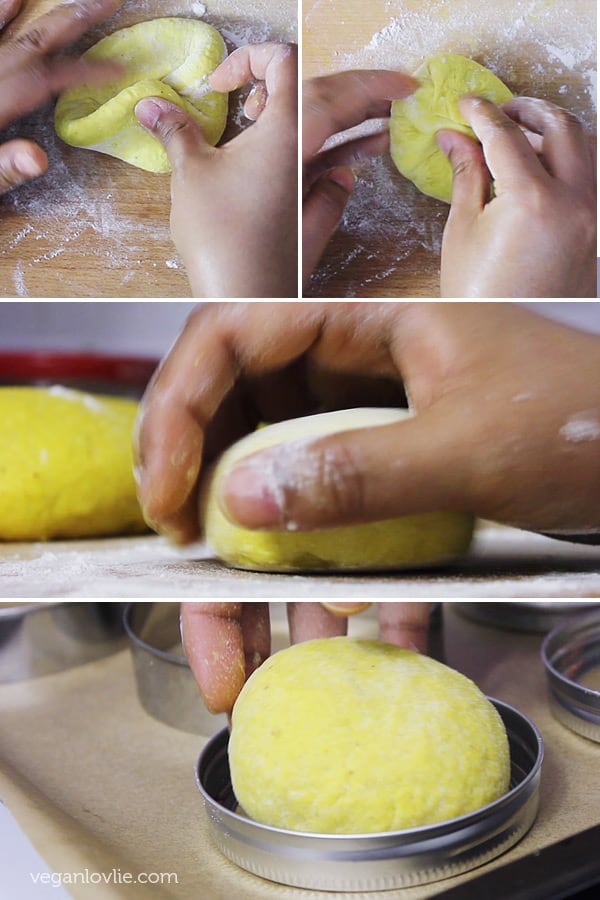
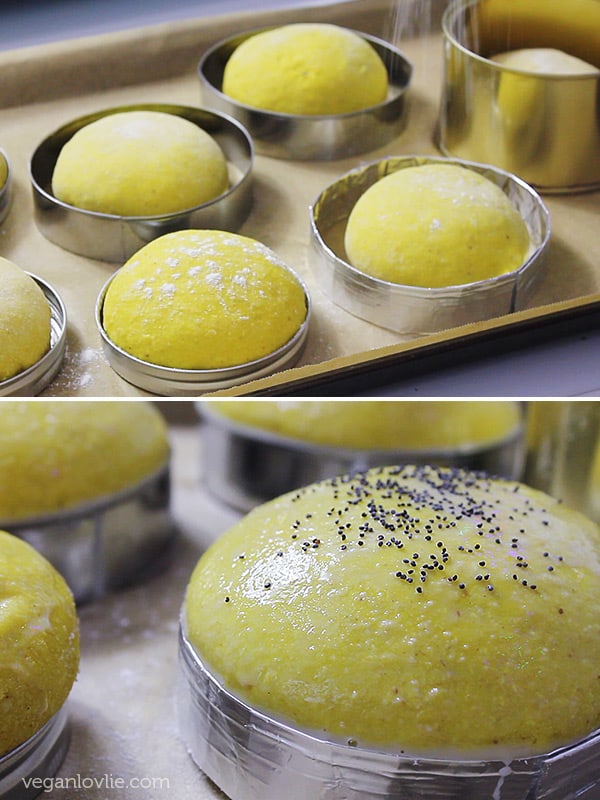
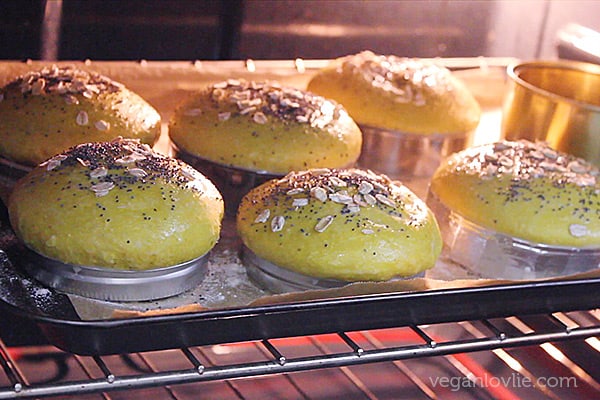
To make these buns I have used crumpet or English muffin rings which you can purchase at most kitchen utensil stores or online. Or you can also make your own using heavy duty aluminium foil. To make them is pretty simple and I briefly go over it in the video. You only need a rectangular piece of aluminium sheet and fold it in half and again in half and then in thirds or as suitable to make them to a finished height of about 2.5 cm or one inch. Then curl the folded aluminium strip to make a circle to the desired diameter. I find that 10 cm or 4 inches is a good size. Overlap the ends and trim off any excess foil. Then staple them together.
Other things that you could use to keep the buns round are an empty can from which the top and bottom have been removed. Or still another option is wide mouth (86mm / 3.5 inch) canning jar rings. These make smaller buns which can be fun and also suitable for kids.
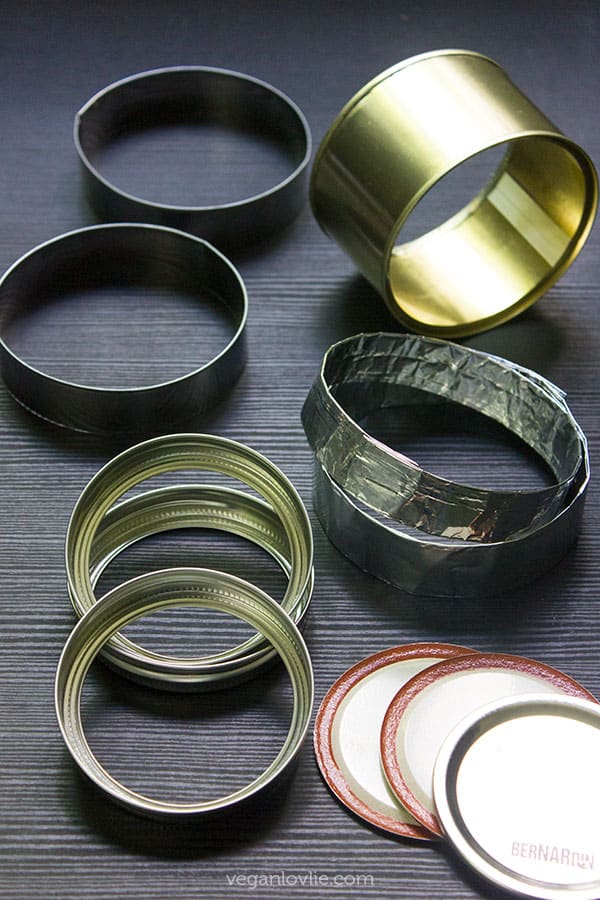
Turmeric and Fresh Coconut Burger Buns
Ingredients (6 – 8 buns)
Dry mix:
3 cups all-purpose flour
1 1/2 teaspoon turmeric
3/4 teaspoon salt
Wet mix:
Yeast mix –
2 teaspoon dry active yeast
1 teaspoon sugar
1/4 cup [60ml] hot water
1/4 cup [60ml] room-temperature water
Milk mix (blender) –
1 1/2 teaspoon rolled oats
1/4 cup [60ml] room-temperature water
4 tablespoons [60ml] room-temperature water (to remove the mixture from the blender)
50 g (1.7 oz) fresh coconut meat
Porridge mix –
2 tablespoons chickpea flour (besan)
1/3 cup [80ml] room-temperature water
More water and flour to make dough and knead
1-2 tablespoons coconut oil (optional)
Glazing:
1/4 cup homemade oat milk (or coconut/almond/soy milk)
2 teaspoons unrefined granulated sugar (like Turbinado or Demerara)
Topping:
Poppy seeds (or other seeds of your choice)
Rolled oats
Begin by proofing the yeast. Add the water and sugar into a jug (make sure water level is not more that halfway in the container as the yeast will foam up and may overflow). Sprinkle the yeast onto the water and mix well to dissolve everything. Set aside to proof (the yeast will foam up indicating that it is active). If the yeast doesn’t foam, you need to get another yeast.
While yeast is proofing, prepare the milk blend. Place the rolled oats with 1/4 cup of water and fresh coconut meat in a blender. Blend until fine. Then scrape down the sides of the blender and add about 2 tablespoons water and blend again to a smoother paste. Set aside while we prepare the porridge mix.
In a small saucepan, add the chickpea flour. Add in the water a little bit at a time and blend to dissolve the chickpea flour. There should not be any lumps. Turn the heat on to medium and allow the mixture to gently heat up as you stir constantly. The mixture will start to thicken until it reaches a thick paste consistency. At this point, remove from the heat and add in the mixture from the blender. Add the 2 remaining tablespoons of water in the blender to dilute and remove as much of the mixture as you can from it. Mix well with the porridge and set aside.
In a large mixing bowl, add the flour, turmeric and salt. Mix well. Pour in the proofed yeast liquid and the pudding mixture. Mix well with a spatula first then go in with your hand to start forming a dough.
Knead into the bowl and add a little water if required to form a soft non-sticky dough. At this point you can add the coconut oil if you are using it.
Once a ball of dough is formed, take it out of the bowl onto a floured board or work surface. Knead for 10 – 15 minutes.
Then place the dough back into the bowl, cover with a lid or tea towel and let the dough rise in a warm place until it has doubled or tripled in size. (This can take from 40 minutes to 1 h 30 minutes depending on how warm it is). You can also preheat the oven on the lowest temperature. Then turn it off and place the covered bowl inside with the door shut.
Once the dough has risen to double or triple, punch it down in the bowl then remove it and place it onto the floured board. If you want to make buns of exactly the same size, weigh the dough then divide them into equal portions. For me, the dough weighed 780 g (27.5 oz) in total. So, I made 4 buns of 120 g each and 3 smaller buns of 100 g each. Between 100 – 140 g will make good size buns.
Roll each portion of dough to make a smooth ball, then flatten it on the board. Take the dough from one edge and fold it onto the centre. Repeat all round and pinch the centre where all the edges meet to plump up the dough. Place the ball of dough with the pinched side onto the board. Enclose your hand around without pressing on the dough. Begin to do a circular motion with your dough so that the dough rolls on itself. Once the dough is evenly smooth, gently lift and place it on a baking tray (lined with parchment paper) in the middle of a greased English muffin ring or wide mouth canning jar ring. Repeat for the rest of the dough.
Sprinkle a little flour on the dough and gently cover them with a tea towel. Place in a warm place and let rise until the dough fills the ring and is well plumped.
Preheat the oven on 180 degrees Celsius or 350 degrees Fahrenheit.
Dissolve 2 teaspoons of sugar in the oat milk. Gently brush this mixture onto each bun. Take care not to deflate them. Sprinkle with seeds of your choice.
Place in the oven and bake for 25 minutes or until the buns sound hollow when you tap on them.
Remove from the oven and immediately cover them with a tea towel. This will ensure they remain soft. After 15 minutes, remove them from the rings and allow them to cool. Keep in an airtight container or freeze to keep for longer.
Turmeric and Fresh Coconut Burger Buns
Ingredients
Dry mix:
- 3 cups all-purpose flour, [cup volume 240ml]
- 1 1/2 teaspoon turmeric
- 3/4 teaspoon salt
Wet mix:
Yeast mix -
- 2 teaspoon dry active yeast
- 1 teaspoon sugar
- 60 ml hot water, 1/4 cup
- 60 ml room-temperature water, 1/4 cup
Milk mix (blender) -
- 1 1/2 teaspoon rolled oats
- 60 ml room-temperature water, 1/4 cup
- 60 ml room-temperature water, to remove the mixture from the blender, [1/4 cup]
- 50 g 1.7 oz fresh coconut meat
Porridge mix -
- 2 tablespoons chickpea flour, besan
- 80 ml room-temperature water, 1/3 cup
- More water and flour to make dough and knead
- 1-2 tablespoons coconut oil, optional
Glazing:
- 60 ml homemade oat milk, or coconut/almond/soy milk [1/4 cup]
- 2 teaspoons unrefined granulated sugar, like Turbinado or Demerara
Topping:
- Poppy seeds, or other seeds of your choice
- Rolled oats
Instructions
- Begin by proofing the yeast. Add the water and sugar into a jug (make sure water level is not more that halfway in the container as the yeast will foam up and may overflow).
Sprinkle the yeast onto the water and mix well to dissolve everything. Set aside to proof (the yeast will foam up indicating that it is active). If the yeast doesn't foam, you need to get another yeast. - While yeast is proofing, prepare the milk blend.
Place the rolled oats with 1/4 cup of water and fresh coconut meat in a blender. Blend until fine. Then scrape down the sides of the blender and add about 2 tablespoons water and blend again to a smoother paste. Set aside while we prepare the porridge mix. - In a small saucepan, add the chickpea flour. Add in the water a little bit at a time and blend to dissolve the chickpea flour. There should not be any lumps. Turn the heat on to medium and allow the mixture to gently heat up as you stir constantly. The mixture will start to thicken until it reaches a thick paste consistency. At this point, remove from the heat and add in the mixture from the blender. Add the 2 remaining tablespoons of water in the blender to dilute and remove as much of the mixture as you can from it. Mix well with the porridge and set aside.
- In a large mixing bowl, add the flour, turmeric and salt. Mix well. Pour in the proofed yeast liquid and the pudding mixture. Mix well with a spatula first then go in with your hand to start forming a dough.
- Knead into the bowl and add a little water if required to form a soft non-sticky dough. At this point you can add the coconut oil if you are using it.
- Once a ball of dough is formed, take it out of the bowl onto a floured board or work surface. Knead for 10 - 15 minutes.
- Then place the dough back into the bowl, cover with a lid or tea towel and let the dough rise in a warm place until it has doubled or tripled in size. (This can take from 40 minutes to 1 h 30 minutes depending on how warm it is). You can also preheat the oven on the lowest temperature. Then turn it off and place the covered bowl inside with the door shut.
- Once the dough has risen to double or triple, punch it down in the bowl then remove it and place it onto the floured board. If you want to make buns of exactly the same size, weigh the dough then divide them into equal portions. For me, the dough weighed 780 g (27.5 oz) in total. So, I made 4 buns of 120 g each and 3 smaller buns of 100 g each. Between 100 - 140 g will make good size buns.
- Roll each portion of dough to make a smooth ball, then flatten it on the board. Take the dough from one edge and fold it onto the centre. Repeat all round and pinch the centre where all the edges meet to plump up the dough. Place the ball of dough with the pinched side onto the board. Enclose your hand around without pressing on the dough. Begin to do a circular motion with your dough so that the dough rolls on itself. Once the dough is evenly smooth, gently lift and place it on a baking tray (lined with parchment paper) in the middle of a greased English muffin ring or wide mouth canning jar ring. Repeat for the rest of the dough.
- Sprinkle a little flour on the dough and gently cover them with a tea towel. Place in a warm place and let rise until the dough fills the ring and is well plumped.
- Preheat the oven on 180 degrees Celsius or 350 degrees Fahrenheit.
- Dissolve 2 teaspoons of sugar in the oat milk. Gently brush this mixture onto each bun. Take care not to deflate them. Sprinkle with seeds of your choice.
- Place in the oven and bake for 25 minutes or until the buns sound hollow when you tap on them.
- Remove from the oven and immediately cover them with a tea towel. This will ensure they remain soft. After 15 minutes, remove them from the rings and allow them to cool.
Video
Notes
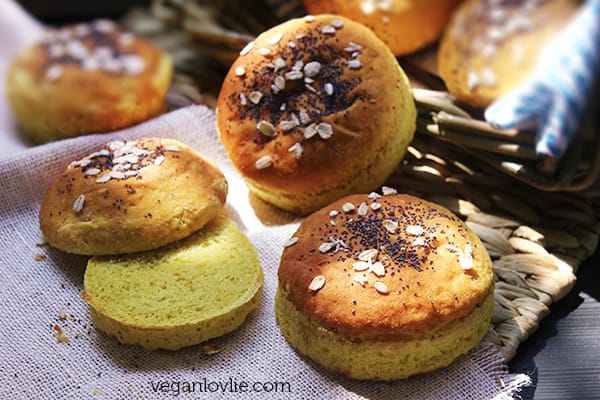
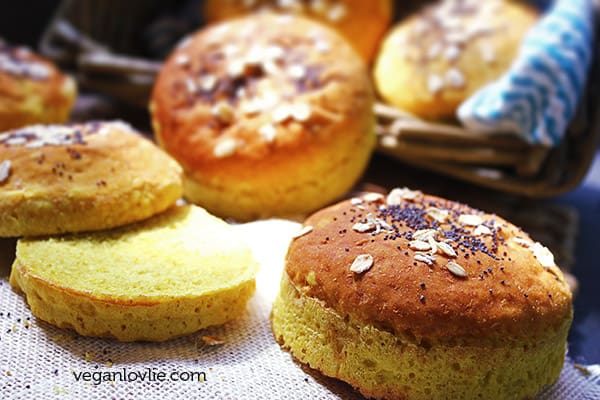
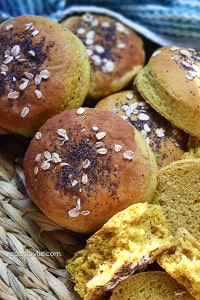

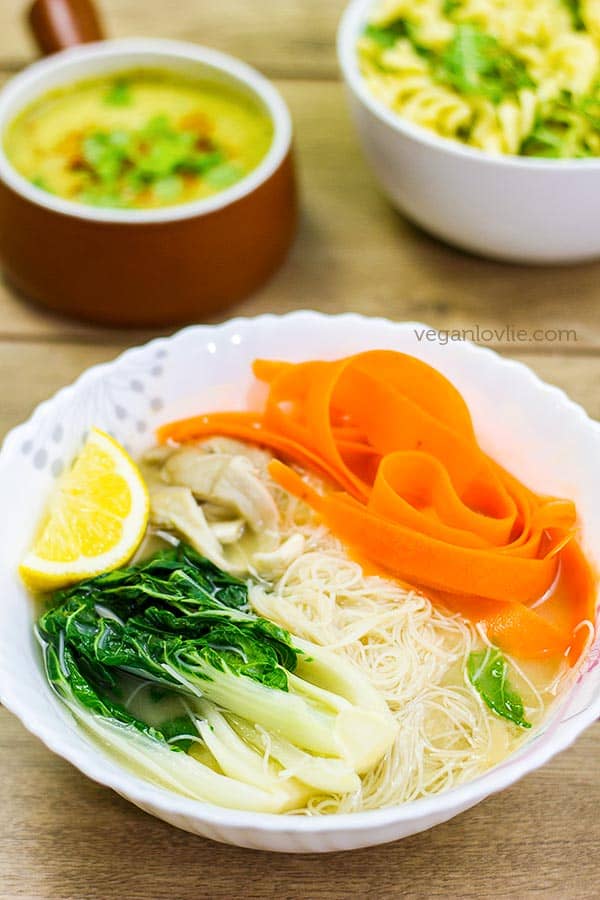
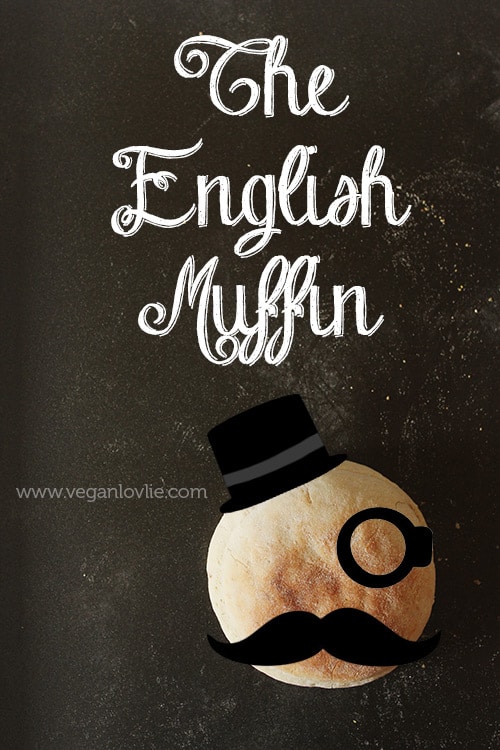
Ha, I love that elastic band story. Practically all my wooden spoons are yellow. I love turmeric and it's awesome how much colour it adds to food. Thank you for this wonderful recipe and the tips on homemade rings to use for them.
I don't know about the taste, but this looks very similar to “Macatia Coco” from back home. Did you get inspired from it? I should try this recipe one day 🙂
Oh gosh, your poor friend! I had braces, and can totally relate! I mean I ate whatever I wanted, but it was still a hassle. These buns looks really yummy!
It's only after I had made them that I realised they had a hint of the fragrance similar to macatia coco although they are not sweet and the turmeric gives them a different taste. 🙂 I've made macatias a few times but traditionally they don't have coconut in the dough itself and they are sweet. But yes the fragrance gives the feel you get from macatias.
I wanted to have some braces put in at some point too but ah, I think I've passed the age where I can endure them now. And I eat far too much turmeric, lol! 😛
All my spoons, boards, counter table and tea towels have turmeric stains, it's incredible! Well I guess that's the price to pay for this wonderful spice.
You’re veggie burger recipe is the best! Now I can’t wait to make these buns to compliment them. Can I substitute pure coconut flakes for the fresh coconut, do you have any suggestions? Thank you!
Thank you for the lovely comment. 🙂 You can substitute the fresh coconut with coconut flakes but half the weight (i.e. use 25 g). Then you’ll need to add an extra 2 – 3 tablespoons water. I hope this helps. 🙂